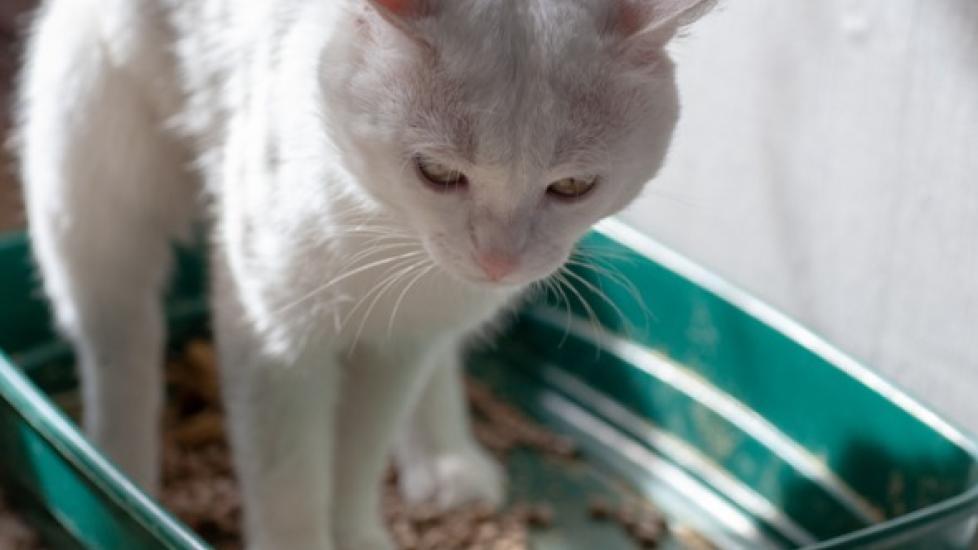Megacolon in Cats
What Is Megacolon in Cats?
Yes, you read that word correctly. Megacolon is a chronic condition that occurs most often in cats and is basically a mega-sized, stretched-out, weakened colon.
Megacolon in cats can cause devastating health consequences as the colon fills with old, hardened feces, and the colon is not strong enough to pass the “cemented stool.”
Symptoms of Megacolon in Cats
The most common clinical signs of megacolon in cats include:
-
Severe, painful constipation
-
Fewer bowel movements
-
Unusually hard feces
You may also see watery diarrhea when the liquid stool is forced around a stuck fecal ball or mass.
As megacolon progresses, your cat may:
-
Have less energy
-
Have a firm, palpable mass in their abdomen, depending on their body condition
-
Become dehydrated
Causes of Megacolon in Cats
The most common cause of feline megacolon is unrelieved or recurrent constipation.
Constipation can be caused by a number of things:
-
An abnormal narrowing of the pelvis (either congenital or resulting from injury, such as a car injury)
-
Paralysis of the anal region
-
Chronic gastrointestinal (GI) diseases
-
Disease that results in dehydration
-
Physical obstruction (tumors, foreign bodies that get stuck along the intestinal tract, hairballs, and naturally occurring strictures in the colon)
With all of these causes, if constipation is not relieved, the distended colon loses normal muscle strength, which exacerbates the constipation.
Another cause of megacolon begins when a cat loses proper nerve function within their colon. This prevents the muscles of the colon wall from functioning properly to pass along stool.
The muscles become stretched, and the colon gets wider. Fecal material accumulates and does not get pushed out, resulting in severe constipation, or worse, obstipation, where the cat stops defecating altogether.
How Vets Diagnose Feline Megacolon
On physical examination, your vet may be able to feel the enlarged colon unless your cat is overweight. Radiographs, or x-rays, of your cat’s abdomen and spine are frequently recommended to look for underlying problems and to assess the degree of constipation.
Radiographs with contrast dye can allow your veterinarian to see the flow of food through the GI tract and thoroughly evaluate the condition. Routine laboratory tests will give a wider picture of your cat’s overall condition, and an abdominal ultrasound may be recommended as well.
Treatment for Megacolon in Cats
Treatment of megacolon in cats depends upon the cause and severity. A medical approach is usually tried first, but surgery may be necessary for severe or chronic cases.
A medical approach involves the use of laxatives, colon-wall stimulants, enemas, and high-fiber diets or low-residue diets. While these don’t correct the underlying cause, they will hopefully allow fecal material to pass so the cat does not become further constipated. If megacolon is caught early, this may be enough to return the cat to normalcy, but there’s a high chance of recurrence.
More severe constipation often requires anesthesia and administration of enemas combined with manual extraction. It may take several attempts to relieve your cat’s constipation.
If the problem continues for months or years, a cat’s colon may eventually stop functioning. Surgical removal of the affected area of the colon is often necessary to return these cats to health.
Recovery and Management of Feline Megacolon
Recovery for cats with megacolon that are treated medically is uncertain and best evaluated on a case-by-case basis.
If muscle function returns and constipation resolves with therapy, the prognosis is fairly bright; however, recurrence is common in many cats. For these patients, pet parents must be diligent in monitoring stool output to prevent severe recurrence. If a cat is otherwise healthy and has a functional colon, they may benefit from targeted or prescription diets and medications.
When the condition has progressed to the point of requiring surgery, the prognosis doesn’t necessarily worsen, but the road to recovery can be longer. The cat will likely have increased bowel movements and loose stools for two to three months following surgery.
If no complications occur after surgery, most cats do quite well. Unfortunately, megacolon seems to be a devastating condition for many young kittens who develop the condition.
Megacolon in Cats FAQs
How long can a cat live with megacolon?
There is no expiration date attached to a diagnosis of megacolon, but the disease is serious and should never be ignored. Early intervention is the key with megacolon in cats. If you see the symptoms and go to the vet early on, your cat can go on to lead a basically normal life.
Can cat megacolon be cured?
Treatment of megacolon in cats depends upon the extent and severity of the condition. The longer it continues, the more aggressive the treatment must be. Chronic treatment may be required in any case.
How does a cat get megacolon?
Under normal circumstances, the colon or large intestines absorb water and store fecal material. When the movement of feces is delayed and feces remains in the colon for prolonged periods, the colon continues to absorb water from the feces.
This causes the delayed stool to dry out and harden, making it more difficult to pass. This can lead to more feces piling up, which stretches the colon out, and the cycle becomes harder to break as the stool is harder to pass.
Image: istockphoto.com/Mironmax Studio
